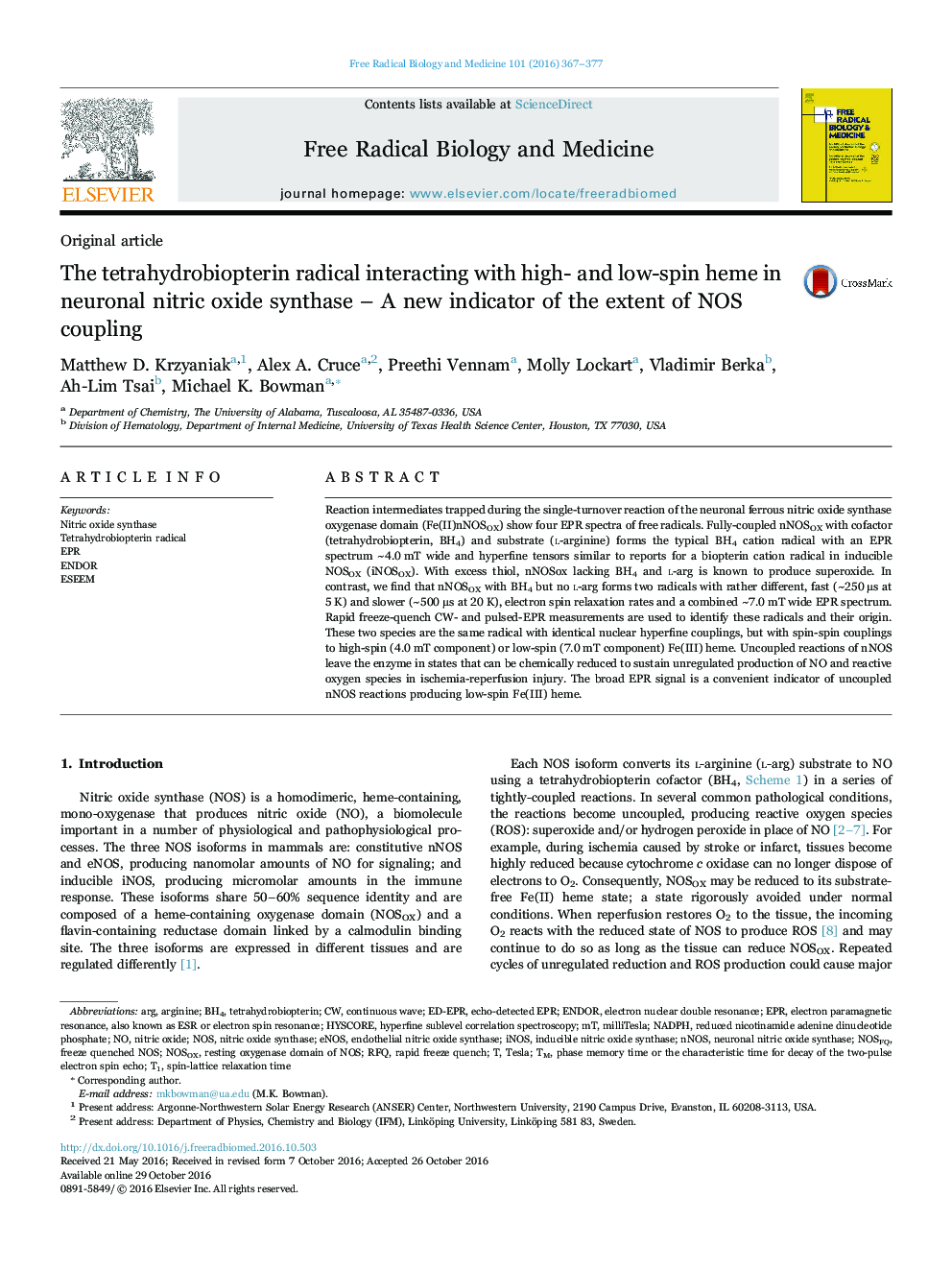| Article ID | Journal | Published Year | Pages | File Type |
|---|---|---|---|---|
| 5501862 | Free Radical Biology and Medicine | 2016 | 11 Pages |
Abstract
Reaction intermediates trapped during the single-turnover reaction of the neuronal ferrous nitric oxide synthase oxygenase domain (Fe(II)nNOSOX) show four EPR spectra of free radicals. Fully-coupled nNOSOX with cofactor (tetrahydrobiopterin, BH4) and substrate (l-arginine) forms the typical BH4 cation radical with an EPR spectrum ~4.0 mT wide and hyperfine tensors similar to reports for a biopterin cation radical in inducible NOSOX (iNOSOX). With excess thiol, nNOSox lacking BH4 and l-arg is known to produce superoxide. In contrast, we find that nNOSOX with BH4 but no l-arg forms two radicals with rather different, fast (~250 μs at 5 K) and slower (~500 μs at 20 K), electron spin relaxation rates and a combined ~7.0 mT wide EPR spectrum. Rapid freeze-quench CW- and pulsed-EPR measurements are used to identify these radicals and their origin. These two species are the same radical with identical nuclear hyperfine couplings, but with spin-spin couplings to high-spin (4.0 mT component) or low-spin (7.0 mT component) Fe(III) heme. Uncoupled reactions of nNOS leave the enzyme in states that can be chemically reduced to sustain unregulated production of NO and reactive oxygen species in ischemia-reperfusion injury. The broad EPR signal is a convenient indicator of uncoupled nNOS reactions producing low-spin Fe(III) heme.
Keywords
eNOSENDORRFQESEEMHYSCOREtetrahydrobiopterinBH4Hyperfine sublevel correlation spectroscopynNOSiNOSNOSNADPHmilliTeslaArginineArgTeslaEPRElectron nuclear double resonanceSpin-lattice relaxation timeinducible nitric oxide synthaseendothelial nitric oxide synthaseneuronal nitric oxide synthasecontinuous waveNitric oxidenitric oxide synthasereduced nicotinamide adenine dinucleotide phosphate
Related Topics
Life Sciences
Biochemistry, Genetics and Molecular Biology
Ageing
Authors
Matthew D. Krzyaniak, Alex A. Cruce, Preethi Vennam, Molly Lockart, Vladimir Berka, Ah-Lim Tsai, Michael K. Bowman,
